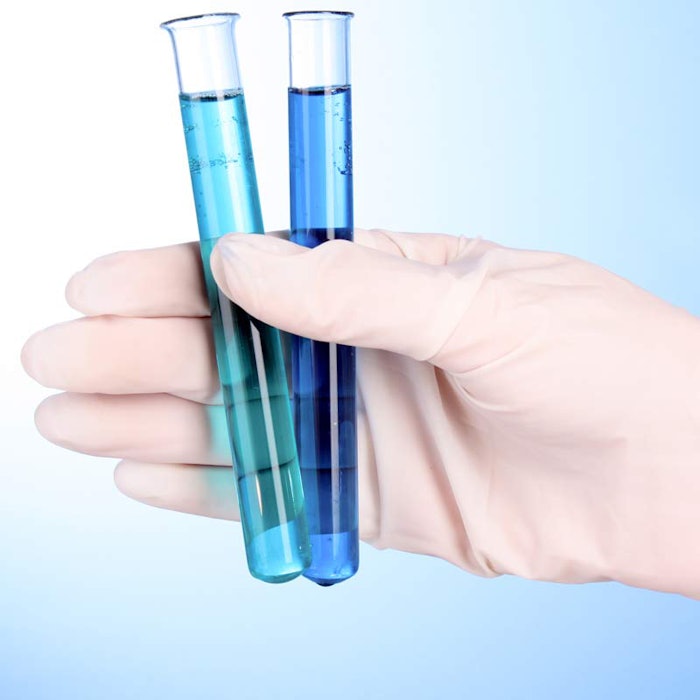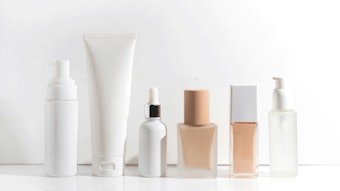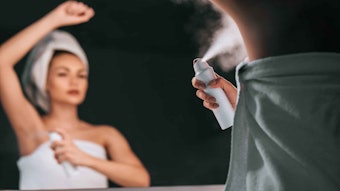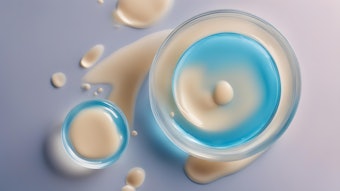
The Cosmetic Ingredient Review Expert Panel has made a final determination on certain chamomile, polymer, keratin and sulfate ingredients used in cosmetics formulations, deeming a number of them safe for use at certain levels while two HDI polymers still have insufficient data.
During its 139th expert panel meeting held in June, the panel made determinations on Chamomilla recutita-derived ingredients (11 ingredients), hexamethylene diisocyanate (HDI) polymers (19 ingredients), keratin and keratin-derived ingredients (8 ingredients), sodium sulfate (1 ingredient).
Chamomilla recutita (Matricaria)-derived Ingredients
The panel concluded the following 11 Chamomilla recutita-derived ingredients are safe in the present practices of use and concentration in cosmetics, when formulated to be non-sensitizing. These ingredients function mostly as fragrances and skin conditioning agents in cosmetic products.
- Chamomilla Recutita (Matricaria) Flower
- Chamomilla Recutita (Matricaria) Flower Extract
- Chamomilla Recutita (Matricaria) Flower Powder
- Chamomilla Recutita (Matricaria) Flower Water
- Chamomilla Recutita (Matricaria) Flower Oil
- Chamomilla Recutita (Matricaria) Extract
- Chamomilla Recutita (Matricaria) Flower/Leaf Extract
- Chamomilla Recutita (Matricaria) Flower/Leaf/Stem Extract*
- Chamomilla Recutita (Matricaria) Flower/Leaf/Stem Water*
- Chamomilla Recutita (Matricaria) Leaf Extract*
- Chamomilla Recutita (Matricaria) Oil
*Not reported to be in current use. If the ingredients in this group not in current use are used in the future, the expectation is that they would be used in product categories and at concentrations comparable to others in this group, the panel determined.
Concentration Levels
- Chamomilla Recutita (Matricaria) Flower Powder has the highest maximum concentration of use; it is used at concentrations up to 1% in rinse-off products (cleansing skin care preparations).
- The highest reported maximum use concentration of Chamomilla recutita (Matricaria)-derived ingredients in leave-on products is 0.5% Chamomilla Recutita (Matricaria) Flower Extract in makeup preparations.
Hexamethylene Diisocyanate (HDI) Polymers
The panel issued a final report with the conclusion that the following 17 HDI polymers are safe in the present practices of use and concentration:
- HDI/Trimethylol Hexyllactone Crosspolymer
- Bis-C16-20 IsoalkoxyTMHDI/PEG-90 Copolymer
- Bis-Isostearyl 1,4-Butanediol/HDI/Hydrogenated Dimer Dilinoleyl Alcohol Copolymer*
- Bis-LaurylCocaminopropylamine/HDI/PEG-100 Copolymer*
- Bis-Methoxy PEG-10 DimethylMEA/HDI/Bis-PEG-10 Dimethicone Copolymer*
- Cholesterol/HDI/Pullulan Copolymer*
- DecylHDI/PEG-180 Crosspolymer*
- DiethyleneGlycol/DMAPAcrylamide/ PEG-180/HDICopolymer
- HDI/Di-C12-14 AlkylTartrate/Hydrogenated Dilinoleyl Alcohol Copolymer
- HDI/PEI-45/SMDI Crosspolymer*
- HDI/PPG/Polycaprolactone Crosspolymer
- Methoxy PEG-17/Methoxy PEG-11/HDI Isocyanurate Trimer Crosspolymer*
- Methoxy PEG-17/Methoxy PEG-11/HDICrosspolymer
- PEG-240/HDI Copolymer Bis-Decyltetradeceth-20 Ether
- PPG-26/HDICopolymer*
- Steareth-100/PEG-136/HDI Copolymer
- Stearyl HDI/PEG-50 Copolymer*
Two HDI Polymers Insufficient Data
The panel concluded that the available data are insufficient for evaluating the safety of the following two HDI polymers in cosmetic products:
- Bis-HydroxyethylAcrylate Poly(1,4-Butanediol)-9/TMHDICopolymer*
- 1,4-Butanediol/Succinic Acid/Adipic Acid/HDICopolymer*
*Not reported to be in current use. If the ingredients in this group not in current use are used in the future, the expectation is that they would be used in product categories and at concentrations comparable to others in this group, the panel said.
The data needed to evaluate the safety of these two ingredients are:
- Molecular weight (i.e., median MW and MW range or distribution).
- If the molecular weights are below 1000 Da, then solubility in formulation, dermal absorption, and/or 28-day dermal toxicity data may be needed. If soluble or dermally absorbed, then systemic toxicity may be needed, including genotoxicity, carcinogenicity, and reproduction/developmental toxicity data HDI/TrimethylolHexyll
- •If soluble or dermally absorbed, then systemic toxicity may be needed, including genotoxicity, carcinogenicity, and reproduction/developmental toxicity data
HDI/Trimethylol Hexyllactone Crosspolymer is used in up to 385 formulations. It also has the highest concentration of use in leave-on products (31%). Exposure to diisocyanates (monomers such as HDI; i.e., not the polymer ingredients herein) in the workplace is one of the leading causes of occupational asthma and has been associated with airway irritation and asthma-like symptoms, the panel said. Diisocyanates can also cause both irritant and allergic contact dermatitis, as well as skin and conjunctival irritation, it determined.
The panel also noted that data showed that the diisocyanate monomers would not be present in the ingredients as manufactured, but the panel emphasized that the cosmetics industry should use good manufacturing practices to ensure that these monomers are absent from the ingredient or the formulation.
Keratin and Keratin-Derived ingredients
The panel issued a final report with the conclusion that the following eight keratin-derived ingredients are safe in cosmetics in the present practices of use and concentration as described in this safety assessment.
- Hydrolyzed Keratin
- Hydrolyzed Hair Keratin
- Hydrolyzed Oxidized Keratin*
- Hydrolyzed Sulfonated Keratin*
- Keratin
- Oxidized Keratin*
- Soluble Keratin
- Sulfonated Keratin*
*Not reported to be in current use. If the ingredients in this group not in current use are to be used in the future, the expectation is that they would be used in product categories and at concentrations comparable to others in this group. Since these ingredients come from natural sources, pesticide residues and heavy metals may be present in keratin source materials, the panel said.
Use GMPs Before Blending into Cosmetic Formulations
The panel emphasized that the cosmetics industry should continue to use Good Manufacturing Practices (GMPs) to limit these impurities in the ingredients before blending into cosmetic formulations. The panel was also concerned about the inherent risks of using animal- and human-derived ingredients in cosmetic products, namely the potential for transmission of infectious agents. It emphasized that suppliers and users must assure that these ingredients are free from pathogenic viruses or detectible infectious pathogens (e.g. Bovine Spongiform Encephalopathy (BSE), Human Immunodeficiency Virus (HIV), and Creutzfeld-Jacob disease (CJD)).
Sodium Sulfate
The panel issued a final amended report with the conclusion that sodium sulfate is safe as used in cosmetics when formulated to be non-irritating.
In a previous review of this ingredient in 2000, the panel determined that sodium sulfate was safe for use in rinse-off formulations, and safe at concentrations up to 1% in leave-on formulations. In that assessment, sodium sulfate was reported to be used in 28 cosmetic formulations; limited data indicated that the highest reported maximum use concentration was 0.5% in a leave-on facial lotion and facial toner.
Based on data received in 2016, sodium sulfate is used in 777 cosmetic formulations and the highest maximum use concentration is 2.0% in a leave-on cosmetic product.






!['[Sunscreen] developers will be able to innovate more efficiently while maintaining high standards of quality and safety for consumers.'](https://img.cosmeticsandtoiletries.com/files/base/allured/all/image/2024/06/woman_outside_using_sunscreen_on_face_ISO_test_standards_AdobeStock_783608310.66678a92029d9.png?auto=format%2Ccompress&fit=crop&h=191&q=70&rect=62%2C0%2C2135%2C1200&w=340)


